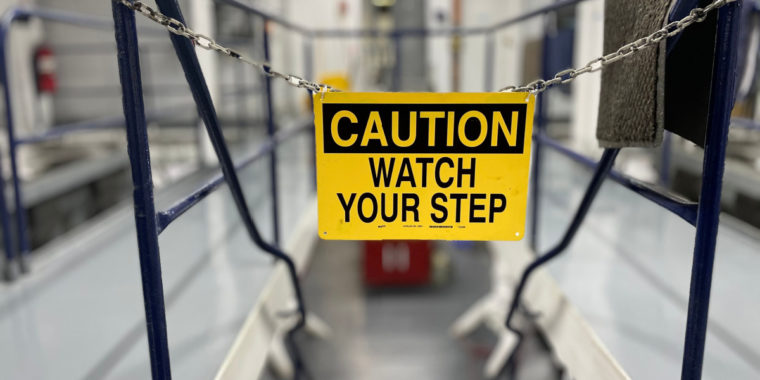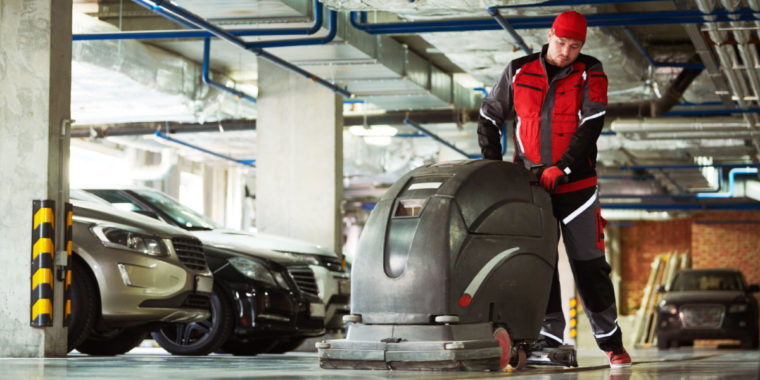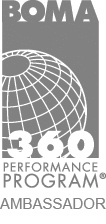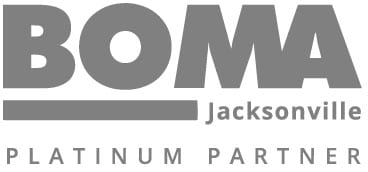Fall-related fatalities and their severe consequences in the workplace are preventable. Yet, falls still take the lives of hundreds and injure thousands of workers each year. Tackling this issue requires a greater emphasis on education, awareness, and fall protection regulations.
For these reasons, the Occupational Safety and Health Administration (OSHA) implemented the National Emphasis Program (NEP) on Falls earlier this year to reduce severe injuries and fatalities resulting from falls at heights in various workplaces. This article will provide an overview of the NEP on Falls, initiatives, and the importance of compliance for building owners and property managers.
Focus on Falls – The OSHA National Emphasis Program
OSHA implements temporary NEPs to focus resources on specific hazards and high-hazard industries, using data and inspection findings for evaluation. The NEP on Falls took effect on May 1, 2023, with compliance officers authorized to initiate inspections on July 30, 2023, upon observing workers at heights without prior appointment.
Eric Harbin, Administrator for OSHA, states, “Although most of the regions had their own different approach to addressing falls in the workplace, this kind of nationalized it and put a unified approach on how we target fall exposures in the industry.” This program marks the 10th anniversary of OSHA’s Fall Protection Stand-Down campaign.
The NEP targets general industry and construction to locate and inspect fall hazards in the workplace.
- Targeted Inspections: OSHA officers are now authorized to conduct inspections specifically focused on fall hazard activities in several areas, including rooftop mechanical work/maintenance, window and gutter cleaning, and power washing buildings. When OSHA observes potential risks, it can take immediate action without requiring prior incidents or complaints to trigger an inspection.
- Educational Outreach: A vital component of the NEP is educating employers and workers about effective fall protection methods. The program aims to increase awareness and understanding of fall hazards and the best mitigation practices.
- Emphasis on Compliance and Prevention: The program stresses the importance of adhering to OSHA’s fall protection standards. It includes reviewing and ensuring that all required safety measures, such as guardrails, safety nets, personal fall arrest systems, and training, are in place and effective.
The OSHA NEP on Falls signals an increase in enforcement to prevent fatal and non-fatal falls. Employers, building owners, and property managers must take necessary precautions to minimize fall risks in the workplace and promote worker safety. The NEP’s focus on outreach and compliance assistance also provides a valuable opportunity for employers and industry associations to work with OSHA to reduce fall hazards and improve safety in the workplace.
Why Did OSHA Implement an NEP for Fall Protection?
During the COVID-19 pandemic, fall inspections decreased. However, with the workplace returning to a new normal, there is a renewed focus on fall protection. Here are some compelling statistics and insights supporting a greater emphasis on fall protection:
- Fall protection remains the top citation for the 13th consecutive year, doubling the second-place citation.
- In fiscal year 2023, fall protection, ladders, scaffolding, and fall protection training resulted in over 15,000 OSHA citations.
- Falls remain the leading cause of fatalities and severe workplace injuries.
As inspections began nationally on July 30, 2023, OSHA compliance officers can now open inspections whenever they observe work at heights.
Building Owner Responsibilities Under OSHA’s National Emphasis Program on Falls
The OSHA National Emphasis Program (NEP) on Falls places critical responsibilities on building owners to ensure the safety of workers at heights. This emphasis on fall protection underscores the role of building owners in preventing accidents and maintaining compliance with OSHA standards.
- Adequate Fall Protection Equipment: Building owners are required to equip their buildings with proper fall protection systems. This includes systems that guard against potential hazards like skylights, guardrails, and roof hatches, which building owners and property managers may overlook.
- Skylights or any hole over four feet must be safeguarded as per OSHA 1910.28(b)(3)(i).
- Roof hatches, ladderway floor holes, or platform holes, when open, are considered fall hazards and must comply with OSHA 1910.28(b)(3)(iv).
- Appropriate fall protection must be provided for parapet walls less than 39 inches in height, as outlined in OSHA 1910.29(b).
- Documentation and Certification Requirements: Building owners must provide written documentation that certifies the safety of anchors for Rope Descent Systems (RDS) and suspended scaffolds. Each anchorage point must be certified by a qualified person at least every ten years and capable of supporting 5,000 pounds or more in any direction. These systems also require annual inspections by qualified persons.
- Training Requirements for Building Employees: It’s not just about having the right equipment; building employees working at heights must be adequately trained. OSHA standard 1910.30(a)(1) emphasizes the importance of training employees by a qualified person to recognize and mitigate the risks associated with working at heights. The training must be understandable and cover how to use fall protection systems, set up an area, and retrain employees who lack the skill or understanding to operate safely.
- Liabilities for Non-Compliance: The repercussions for building owners who fail to comply with these standards are significant. Fall protection violations can result in severe violation fines exceeding $15,000. Willful or repeated offenses can attract fines of over $150,000. Moreover, failure to correct identified issues beyond the given abatement date can result in daily fines of up to $15,625.
By adhering to these responsibilities, building owners contribute significantly to the safety and well-being of workers operating at heights.
Preparing for OSHA’s National Emphasis Program on Falls
Building owners must proactively ensure their buildings have the necessary fall protection systems, comply with OSHA regulations, provide necessary documentation and training, and understand the legal and financial consequences of non-compliance.
Preparing for OSHA’s National Emphasis Program on Falls is critical for building owners and property managers. To ensure compliance, key steps include:
- Safe Roof Access: Ensuring safe and secure access to the roof, including proper pathways and entry points that comply with OSHA’s safety standards.
- Safe Roof Walking Surfaces: Regularly inspect and maintain roof walking surfaces to prevent slip and fall accidents.
- Edge Protection: Guarding edges and areas over the edge with appropriate fall protection systems such as guardrails or safety nets is mandatory.
- Employee Training: Providing comprehensive fall protection training to all building employees working at heights is vital to compliance.
- Adequate Fall Protection Equipment/Systems: Maintain adequate fall protection equipment, including guardrails for skylights and roof hatches, and have a qualified person (Professional Engineer) conduct regular inspections and certification of anchors.
Valcourt Building Services offers expert solutions and assistance to help you prepare for OSHA’s NEP on Falls. Contact Valcourt today to ensure your building meets OSHA’s rigorous safety standards and protect your workers from fall hazards.
Plus, watch our 30-minute on-demand webinar “Discover What OSHA’s NEP Means for You” for in-depth insights and guidance on fall protection compliance.









